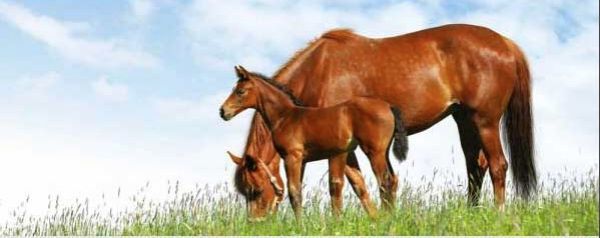|
Foaling need not be a stressful event for horse or owner. Knowing the normal stages of foaling, if and when to intervene will ensure you are prepared. Mares foal quickly and should be watched closely leading up to foaling.
The usual length of a mare's pregnancy is 335-342 days, but varies greatly between mares.
This timeline provides an approximate guide for the events leading up to foaling.
2-4 weeks - The udder will enlarge
7 days - The vulva will swell and tail head area will relax
24-48 hours - Wax plugs will appear on the end of the teats
Stage 1 of foaling will often appear as mild colic and usually occurs at night, or in the early morning. The mare will seem restless and may get up and down. This stage may last up to an hour as the foal becomes positioned in the birth canal. Stage 1 ends when the mare’s ‘water breaks’. This occurs when the sac the foal is in breaks open. If the sac fails to break and a red bag is visible it must be ruptured immediately and the birth assisted.
Stage 2 - Powerful abdominal contractions act to expel the foal and the mare usually lies down. The foal's front legs should appear, followed by its nose and head. If Stage 2 of labour is taking more than 20 minutes, call us immediately.
Stage 3 - In the final stage of birth the feotal membranes are expelled by the mare, often as they stand following birth. Call us if your mare fails to pass the afterbirth within 6 hours of foaling.
The most common reason mares have trouble foaling is incorrect positioning of the foal. Care must be taken to ensure the foal is in the correct position prior to applying gentle traction to the front legs.
Foals should stand and nurse within two hours after birth. Occasionally mares can have problems after foaling including bleeding, colic and infections. Both mare and foal should be monitored closely for the first few weeks after foaling.
It is a good idea to let us know when your mare is close to foaling. We can ensure we have the required equipment and medication on board to help should the need arise.
|
